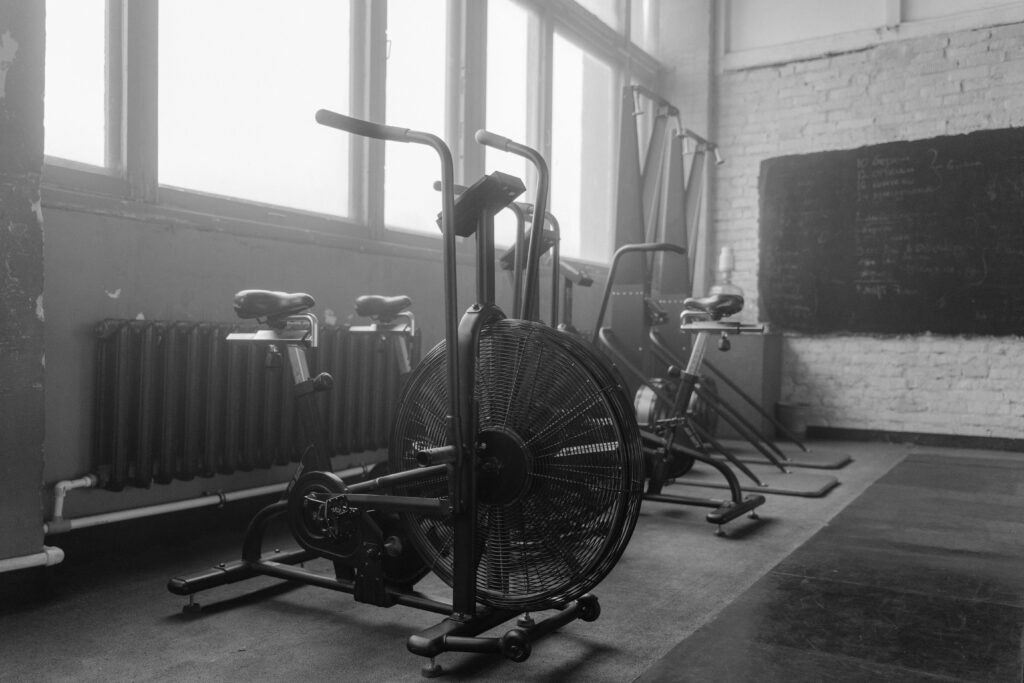The VO₂max Spotlight
VO₂max has become one of the most recognized numbers in endurance training. It shows up in wearable tech dashboards, is discussed on podcasts and social media, and is often framed as the gold standard of aerobic capacity. On the surface, this makes sense: VO₂max represents the maximum rate at which the body can utilize oxygen during exercise, which is essentially the upper ceiling of aerobic energy production.
But while it’s valuable as a physiological marker, VO₂max is not the single determinant of performance it’s often made out to be. Two athletes can share the same VO₂max, yet perform very differently in competition. In fact, for most trained individuals, improvements in VO₂max slow dramatically after the first several months or years of consistent training. The ceiling is largely set by genetics. What matters more is how much of that ceiling you can actually use before fatigue forces you to slow down.
That’s where threshold training comes in.
VO₂max: What It Really Tells You
At its core, VO₂max is a measure of capacity. It reflects the combined ability of the cardiovascular system to deliver oxygen and the muscles to extract and use it. In the lab, it’s measured by progressively ramping up exercise intensity while monitoring oxygen consumption until it plateaus despite increasing workload.
The higher the VO₂max, the greater your theoretical potential to produce aerobic energy. This is why it’s often described as the “aerobic ceiling.” Elite endurance athletes tend to have very high VO₂max values, with marathoners often in the 70–80 mL/kg/min range, cross-country skiers and cyclists in the 80–90s. For context, most healthy but untrained adults sit in the 30s and 40s.
However, the relationship between VO₂max and performance is not linear.
- Genetic limit: VO₂max is highly heritable. Training can increase it, but the margin for growth shrinks as you become well trained.
- Plateau effect: After a foundational period of training, VO₂max improvements taper off, even with high-intensity interval training designed to push the limit.
- Poor predictor of competition outcomes: Among trained athletes, VO₂max values often overlap widely. The athlete with the higher VO₂max isn’t always the faster runner or stronger hybrid competitor.
Instead, what separates performance is the ability to sustain high percentages of VO₂max for extended periods, and that hinges on threshold.
Threshold Training: The Real Driver of Performance
If VO₂max represents the ceiling, threshold is the floor you stand on. Specifically, lactate threshold (or ventilatory threshold, depending on how it’s measured) marks the highest intensity you can sustain before fatigue begins to rise rapidly. It’s the point where the body can no longer balance energy demand with oxygen availability, and anaerobic metabolism begins to contribute significantly to ATP production.
From a physiological perspective, threshold reflects several integrated systems working together:
- Mitochondrial efficiency: the capacity of muscle cells to generate ATP aerobically and delay reliance on glycolysis.
- Capillary density and oxygen delivery: how effectively blood delivers oxygen to working muscle.
- Lactate clearance and buffering: the ability to shuttle lactate out of the muscle and use it as fuel elsewhere.
- Substrate utilization: the degree to which fat oxidation can continue at higher workloads, sparing glycogen for when it’s truly needed.
The practical outcome: a higher threshold means you can hold a faster pace, lift more total volume, or maintain higher power outputs before redlining. Two athletes with identical VO₂max values but different thresholds will have vastly different performances. The athlete who can sustain 85% of their VO₂max will outperform the one who fades at 70%.
This is why threshold has been shown to correlate more strongly with endurance performance than VO₂max. It’s not just about how much oxygen your body could use but how much of that capacity you can actually harness in real-world conditions.
The Physiology of Raising the Threshold
Training at or near threshold doesn’t just sharpen mental toughness, it rewires your physiology in ways that expand performance capacity. The most important adaptations happen in the muscle, blood vessels, and metabolism, and together they explain why threshold training consistently outperforms VO₂max-focused work once you’ve built a base.
Mitochondrial Adaptations
Threshold training strongly activates pathways like PGC-1α, which drive mitochondrial biogenesis. More and better mitochondria mean more aerobic ATP production, delaying the reliance on glycolysis and reducing premature fatigue.
Capillary Growth and Oxygen Utilization
Sustained work near threshold promotes angiogenesis, increasing capillary density around muscle fibers. With more “roads” to deliver oxygen, muscle fibers can operate closer to your aerobic ceiling without failing.
Lactate Clearance and Buffering
At threshold, lactate production rises, but so does the body’s ability to move and recycle it. Transport proteins like MCT-1 and MCT-4 adapt, shuttling lactate into mitochondria where it’s oxidized as usable fuel rather than a waste product. This delays the cascade of acidosis and muscle burn.
Metabolic Flexibility
Another adaptation is the ability to oxidize fat at higher intensities. By sparing glycogen until it’s truly needed, threshold training allows you to sustain workloads longer and manage energy more efficiently in hybrid events or long sessions.
Neuromuscular Efficiency
Finally, threshold exposure refines motor unit recruitment under stress. Muscles learn to coordinate and maintain steady force despite metabolic strain — an efficiency that carries into both endurance work and strength-endurance efforts.
Taken together, these adaptations raise the floor of performance. You don’t just get better at threshold — everything beneath it feels easier. Zone 2 runs become more comfortable, recovery between sets improves, and even maximal efforts feel more repeatable because the underlying system is stronger.
How to Train Threshold (Practical Takeaways)
The science only matters if it translates into training you can apply. The aim of threshold work is to spend controlled, repeatable time at or near the intensity where lactate production and clearance balance each other. Too easy, and the stimulus is insufficient. Too hard, and fatigue takes over before the adaptations occur.
Tempo Sessions
The classic method for targeting threshold is the tempo workout. This sits in the “comfortably hard” zone, an effort you could hold for about an hour. For most, this lands at ~80–90% of max heart rate or just below the point where breathing becomes uncontrolled. A 20–40 minute continuous effort at this pace drives the mitochondrial and lactate clearance adaptations discussed earlier.
Cruise Intervals
Breaking the work into segments allows for more quality. Instead of a straight 40-minute tempo, you might perform 5 × 8 minutes at threshold with 2 minutes of light recovery between intervals. Physiologically, the effect is similar, but the brief resets keep the intensity sharper and mentally more manageable.
Progression Runs or Rides
Another effective approach is the progression session, which builds intensity gradually. Start easy, spend the middle portion in the aerobic “sweet spot,” and finish the final 15–20 minutes near threshold. This not only stimulates the right physiology but also teaches pacing, control, and fuel management — skills that directly carry over to competition.
Weekly Application
For the everyday athlete, one to two threshold-focused sessions per week is plenty. They integrate well alongside strength work, Zone 2 base building, and occasional high-intensity conditioning. What matters most is consistency across weeks and months, rather than forcing breakthroughs in a single workout.
When executed this way, threshold training isn’t about gutting yourself. It’s about carefully targeting the systems that allow you to sustain work at higher outputs. That’s what bridges the gap between being fit in theory and being able to perform in practice.
Why This Works Better for the Everyday Athlete
Threshold training isn’t just for professional cyclists or marathoners. It’s arguably even more important for the everyday athlete who’s balancing training with work, family, and a full schedule. Time is limited, and threshold sessions provide a disproportionate return on investment.
Because threshold training raises the floor, it makes all other training more effective. Strength work feels more sustainable because your aerobic system can handle the recovery demand. Zone 2 sessions become more efficient as your body is better at oxidizing fat and sparing glycogen. Even high-intensity intervals become more repeatable, because your system is better prepared to clear and recycle lactate.
For hybrid athletes, there’s another layer of relevance. Many of the demands in events like HYROX, Spartan races, or tactical fitness tests sit right around threshold intensity: long bouts of work where you’re uncomfortable, but not in an all-out sprint. Training threshold directly mirrors the metabolic environment of these events, which makes it one of the most sport-specific investments you can make.
In short, while VO₂max might look flashy on a watch app or get airtime on podcasts, threshold is what determines how well you actually perform when it matters.
Conclusion: Stop Chasing VO₂max
VO₂max is a valuable metric, but it’s not the endgame. It tells you how big the tank is — not how efficiently you can use it. Threshold, on the other hand, reflects the real-world ability to sustain work, resist fatigue, and perform at a high level over time.
By prioritizing threshold training, you’re not ignoring VO₂max. You’re taking the VO₂max you already have and making it more usable. You’re raising the floor so that everything below it feels easier, more sustainable, and more repeatable.
For the everyday athlete, that’s what leads to lasting performance gains — not chasing a number that’s largely determined by genetics, but building the systems that let you perform stronger, longer, and with more resilience.





